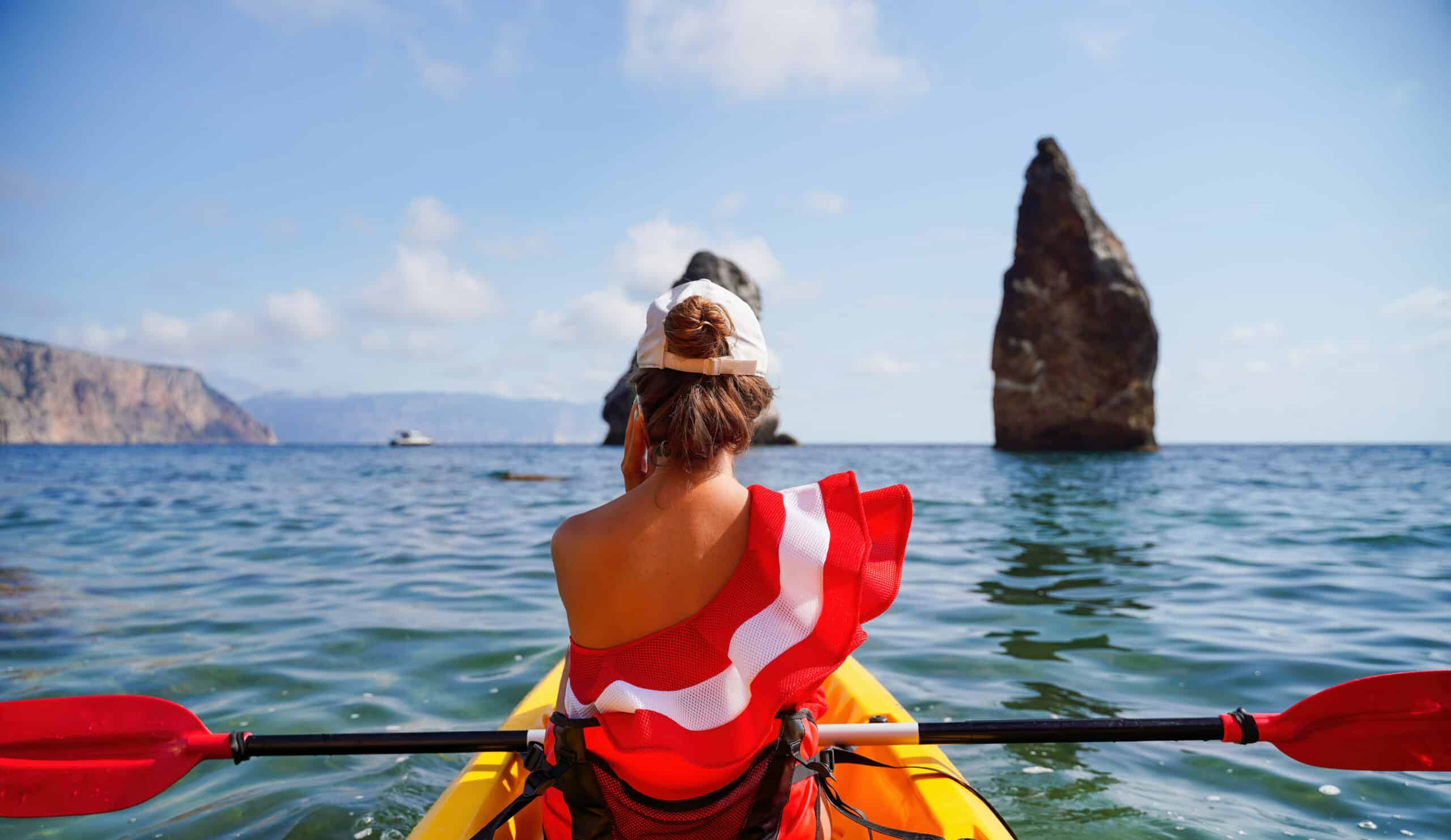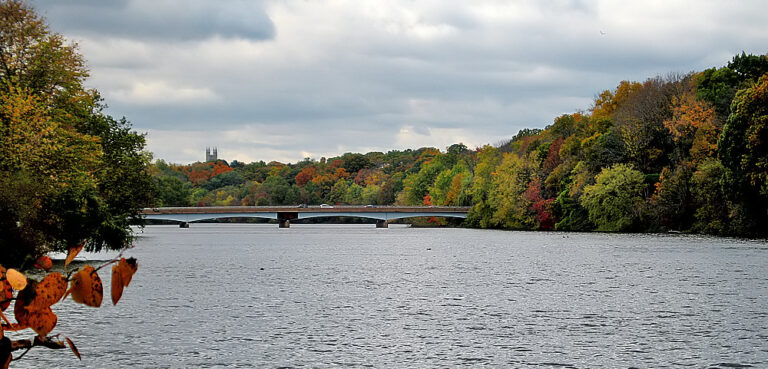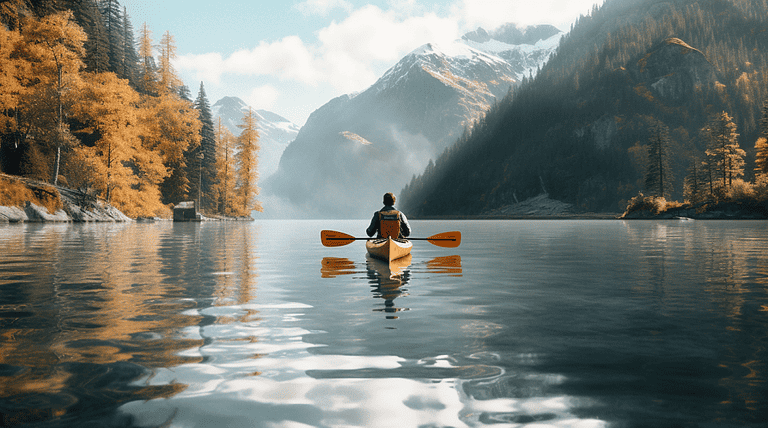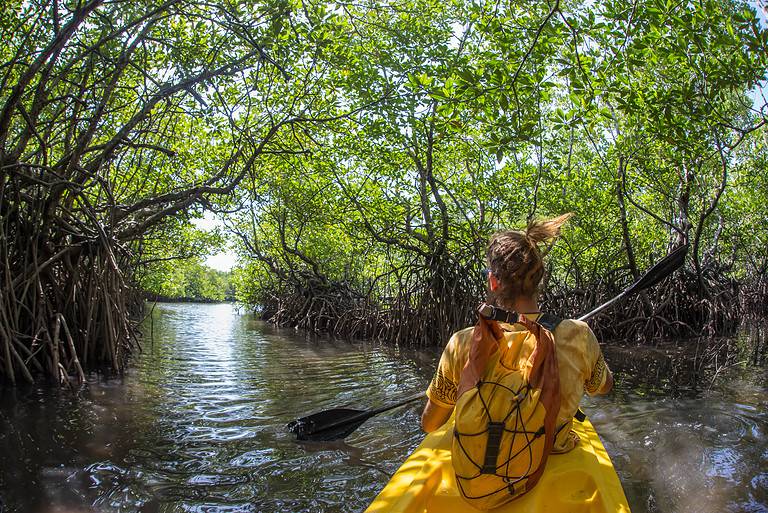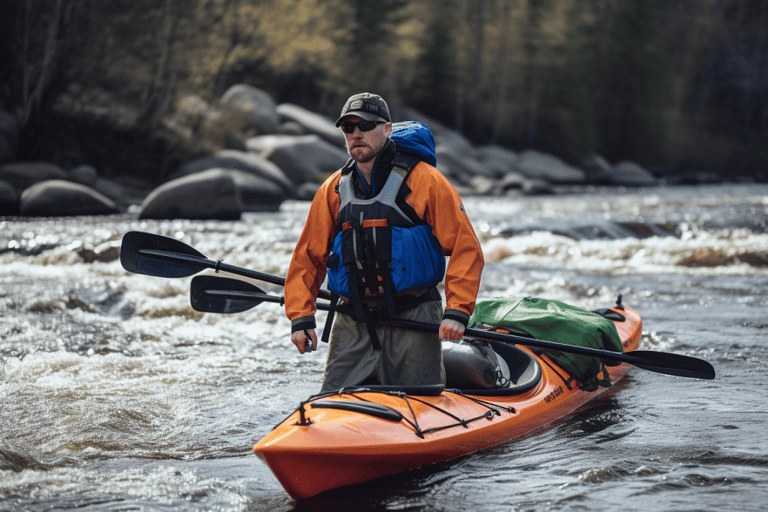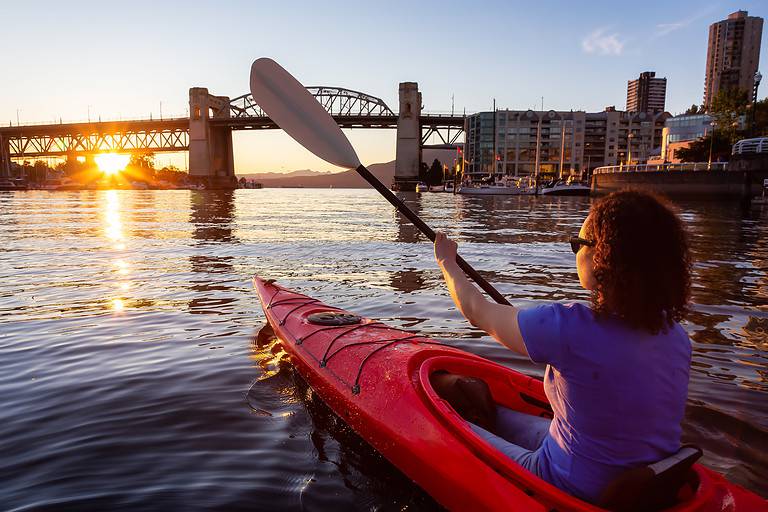Exploring Coastal Kayaking: Tides, Currents, And Navigation
Imagine standing at the edge of an expansive ocean, feeling the gentle breeze on your face as you gaze out into the vast expanse of water. Exploring Coastal Kayaking is one of the most enjoyable activities on a warm summer day. It’s a world waiting to be explored, filled with mysteries and wonders that only those who venture into its depths can discover. Just like the ocean, coastal kayaking holds a similar allure – it beckons us to embark on a journey of exploration and connection.
In this article, we will delve into the captivating realm of coastal kayaking: tides, currents, and navigation. Much like navigating through life’s challenges, understanding the ebb and flow of tides is crucial for successful kayaking expeditions. We will explore how these natural phenomena impact our paddling experience and influence our course.
Navigating coastal currents requires skillful maneuvering and adaptability. We will share tips and techniques to master these dynamic forces while maintaining control over our kayak’s direction. Furthermore, we will delve into essential tools such as maps, compasses, and GPS systems that aid in navigating unfamiliar coastal territories.
Safety should always be a priority when venturing into new waters. We will discuss important precautions to take before setting off on a coastal kayaking adventure and provide guidance on emergency preparedness.
For those seeking to elevate their skills further, we will uncover advanced techniques and share insider tips for tackling challenging conditions while staying connected with nature’s rhythm.
Join us as we embark on this thrilling expedition through coastal kayaking – let us feel the belongingness within this vibrant community united by our love for exploration and appreciation for the untamed beauty of nature’s liquid embrace.
Key Takeaways
- Tides and tidal patterns play a crucial role in coastal kayaking, affecting water depth, currents, and potential hazards.
- Skilled paddlers can strategically utilize coastal currents to their advantage, impacting route choice and energy expenditure.
- Navigation tools such as maps, compasses, and GPS devices are essential for safe and effective kayaking, providing visual representation and precise coordinates.
- Safety precautions, including carrying appropriate gear, learning rescue techniques, checking weather conditions, and informing someone of the route, are vital for a safe kayaking experience.
Understanding Tides: The Basics and Importance for Exploring Coastal Kayaking
Get ready to ride the waves and make the most of your coastal kayaking adventure by understanding the basics of tides and their importance for a smooth and enjoyable experience! Tides play a significant role in coastal kayaking, affecting both safety and navigation. To properly plan your trip, it is essential to consult tide tables, which provide valuable information about the timing and height of tides at specific locations.
Tides are caused by the gravitational pull of the moon and sun on Earth’s oceans. The tidal range refers to the difference in water level between high tide and low tide. Understanding this range is crucial for kayakers as it affects water depth, currents, and potential hazards. During high tide, you’ll have more water beneath you, allowing access to areas that might be inaccessible during low tide due to exposed rocks or shallow waters.
By studying tidal patterns, you can predict when certain areas will have favorable conditions for kayaking. For example, some regions may experience stronger currents during certain phases of the tide cycle. Knowing this information can help you plan your route accordingly or choose different launch times based on your skill level.
Navigating coastal currents: tips and techniques
As we move into discussing how to navigate coastal currents effectively, it’s important to understand that tides influence these currents. By understanding tidal patterns along with current behavior, you can make informed choices about when and where to kayak next.
Mastering the techniques to navigate coastal currents will help kayakers visualize their path and improve their overall experience. When it comes to coastal kayaking, understanding how to navigate through currents is crucial for a safe and enjoyable journey. Here are some tips and techniques that can assist kayakers in navigating coastal currents:
- Coastal Eddies: Coastal eddies are circular water movements caused by the interaction of tides, winds, and the topography of the coastline. These eddies can either work in favor or against kayakers, depending on their direction. By studying patterns and identifying areas with strong eddy activity, kayakers can use them to their advantage or avoid them altogether.
- Tidal Rapids: Tidal rapids occur when a large volume of water passes through a narrow channel or between islands due to tidal changes. These rapid flows can be challenging but also thrilling for experienced kayakers. It is important to plan ahead and time your paddle accordingly to avoid getting caught in powerful tidal currents.
- Reading Water Patterns: Observing the surface characteristics of the water, such as ripples, waves, or swirls, can provide valuable information about current directions and intensity. By honing this skill, kayakers can anticipate potential obstacles or find shortcuts along their route.
- Utilizing Currents for Efficiency: Instead of constantly fighting against currents, skilled paddlers learn how to harness them for efficiency. By paddling with the flow rather than against it during slack tide or using back-eddies near headlands, kayakers can conserve energy and make progress more easily.
Mastering these techniques will allow kayakers to confidently navigate coastal currents while enhancing their sense of belonging in this dynamic marine environment. Understanding these concepts lays a solid foundation for exploring the next section on ‘coastal navigation essentials: maps, compasses, and GPS,’ where we delve into tools that complement our knowledge of tides and currents without missing a beat.
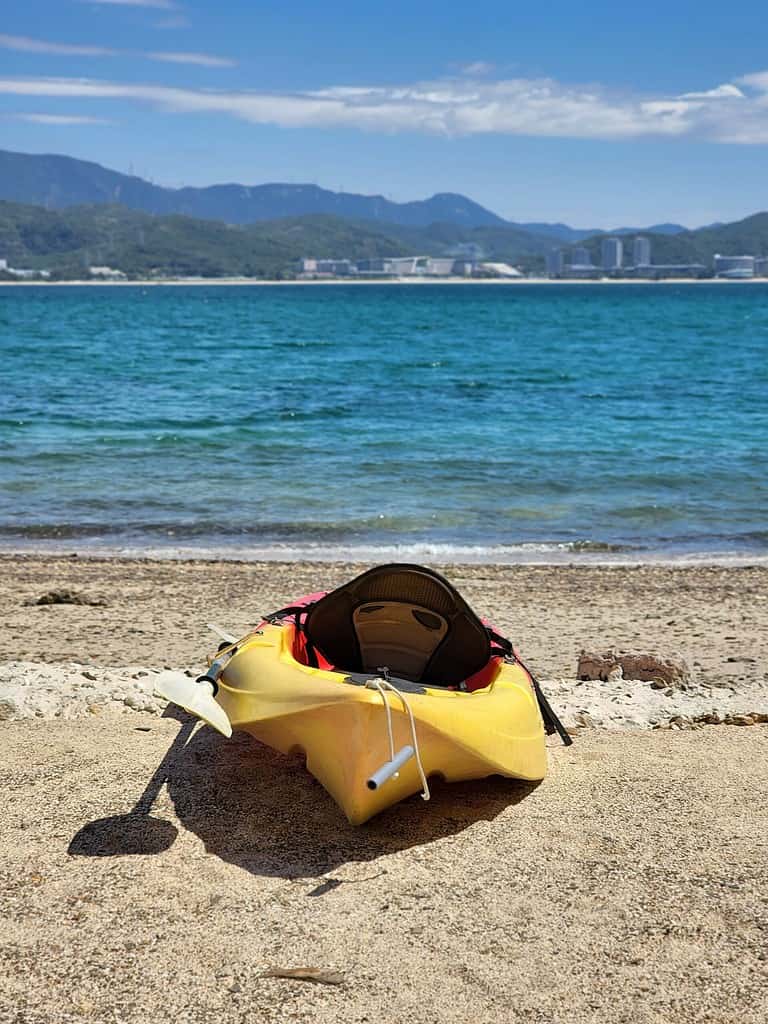
Once you have a solid grasp of navigating coastal currents, it’s time to delve into the essential tools: maps, compasses, and GPS. These tools are crucial for successful coastal navigation as they provide valuable information about your location, direction, and potential obstacles. Maps and compasses have been used for centuries and are still widely relied upon by kayakers today.
Maps offer a visual representation of the coastline, including landmarks, channels, and potential hazards. They allow us to plan our routes in advance and make informed decisions while on the water. By studying the contour lines on a map, we can also identify areas with strong currents or tidal flows that may affect our journey.
Compasses serve as our navigational compasses guide us in the right direction when visibility is limited or landmarks are not easily visible. They help us maintain a consistent heading and ensure we stay on course throughout our expedition. With a good understanding of coastal currents, we can use our compasses to compensate for any drift caused by these powerful forces.
In recent years, Global Positioning System (GPS) technology has become increasingly popular among kayakers. GPS devices provide precise coordinates of our location at any given time. This enables us to track our progress accurately and confidently navigate through complex coastal environments.
By utilizing maps and compasses alongside GPS technology, we can enhance our navigation skills significantly. However, it’s essential to remember that these tools should never replace basic navigational knowledge or common sense. Safety precautions such as checking weather conditions before setting out and carrying emergency equipment should always be practiced.
Transitioning into the subsequent section about safety precautions and emergency preparedness: Understanding how to effectively use maps, compasses, and GPS will greatly assist us in navigating coastal waters safely; however, there are additional measures we must take to ensure our well-being during outings on the water without putting ourselves at risk unnecessarily.
Safety Precautions and Emergency Preparedness
To ensure a safe and enjoyable experience on the water, it’s crucial that you familiarize yourself with safety precautions and emergency preparedness measures. When kayaking along the coast, it is important to always have the necessary safety gear readily available. This includes personal flotation devices (PFDs) for each individual, as well as a whistle or other signaling device to attract attention in case of an emergency. Additionally, it is recommended to carry a first aid kit that is suitable for marine environments.
In terms of rescue techniques, knowing how to perform self-rescue maneuvers can be lifesaving. One common technique is the paddle float self-rescue, which involves using a paddle float to stabilize yourself when re-entering your kayak after capsizing. Another important skill to learn is how to perform an assisted rescue, where you help someone else get back into their kayak after they have capsized.
Emergency preparedness should also be a priority when venturing out on coastal kayaking trips. Make sure you check weather conditions beforehand and plan your trip accordingly. It’s advisable to let someone know your intended route and estimated return time so that they can raise the alarm if needed.
By being well-prepared and having the necessary safety gear at hand, you can greatly reduce the risks associated with coastal kayaking. However, it’s essential to remember that prevention is key – always assess your own abilities and limitations before attempting any advanced techniques or challenging conditions.
Now let’s move on to exploring advanced techniques and tips for coastal kayaking without compromising safety.
Advanced Techniques and Tips for Coastal Kayaking
Ready to take your coastal kayaking skills to the next level? Dive into the world of advanced techniques and tips that will elevate your experience on the water! In this section, we will explore some advanced paddling techniques and discuss how to navigate through various coastal weather conditions.
One important aspect of advanced paddling is mastering different strokes. The forward stroke remains essential, but learning efficient bracing techniques can greatly improve stability in rough waters. The draw stroke allows you to move sideways while maintaining control, while the sweep stroke helps you turn quickly. By practicing these strokes, you’ll gain better control over your kayak and be able to maneuver more effectively in challenging conditions.
Coastal weather conditions can vary significantly, so it’s crucial to understand how they affect your kayaking experience. Pay close attention to wind direction and speed as they can impact both navigation and safety. Headwinds can make paddling more difficult, requiring increased effort and potentially slowing down your progress. Tailwinds, on the other hand, can provide a boost but may also make steering more challenging.
Tides and currents are another important factor to consider when kayaking along the coast. Understanding their patterns is key for planning your journey effectively. Make sure to consult tide charts before heading out as they will indicate when tides are high or low. Additionally, learn about local currents as they can greatly influence your route choice and energy expenditure.
By incorporating advanced paddling techniques and being aware of coastal weather conditions such as wind direction and tides, you’ll be well-prepared for an enhanced coastal kayaking experience. Take the time to practice these skills regularly so that you feel confident in any situation that arises during your adventures on the water!
Frequently Asked Questions
What are some common wildlife encounters while coastal kayaking?
Whale sightings and seal encounters are common wildlife encounters while coastal kayaking. These majestic creatures can often be spotted in their natural habitats, adding to the thrill of the adventure. Whale sightings provide a unique opportunity to observe their impressive size and graceful movements, while seal encounters allow for a closer look at these playful marine mammals. These interactions with marine wildlife create unforgettable experiences and foster a sense of connection with nature for those who seek belonging in the coastal kayaking community.
How do I properly store and transport my kayak?
Proper kayak storage and transportation are crucial for the safety and longevity of your kayak. Think of your kayak as a delicate flower that needs tender care. When storing, place it in a cool, dry area away from direct sunlight to prevent damage. Use padded racks or hooks to avoid warping or denting. During transportation, secure the kayak tightly with straps or ropes to prevent shifting or falling off. Remember, treating your kayak with care ensures many more adventures on the water.
What are the best times of day to go coastal kayaking?
The best times of day to go coastal kayaking depend on safety precautions and gear recommendations. It is important to consider the tidal patterns, wind conditions, and visibility before embarking on a kayaking adventure. Early mornings and late afternoons are generally ideal as the winds tend to be calmer during these times. Additionally, wearing appropriate gear such as life jackets, helmets, and wetsuits can enhance your safety and comfort while exploring the coastlines in our kayaks.
Are there any specific regulations or permits required for coastal kayaking?
When it comes to coastal kayaking, there are indeed specific regulations and required permits that must be adhered to. These regulations ensure the safety of both kayakers and the environment. It is crucial to familiarize oneself with local laws regarding watercraft usage, as they may vary from place to place. Obtaining the necessary permits not only ensures compliance with these regulations but also allows kayakers to enjoy their experience without any legal complications.
What are some recommended resources for learning more about coastal kayaking?
Recommended courses and books are valuable resources for learning more about coastal kayaking. Courses offer hands-on experience and expert guidance, allowing individuals to learn essential skills such as navigation techniques and understanding tides and currents. Books provide in-depth knowledge on various aspects of coastal kayaking, including safety measures, equipment selection, and environmental awareness. These resources foster a sense of belonging within the kayaking community by equipping enthusiasts with the necessary knowledge to navigate coastal waters confidently and responsibly.
Conclusion
In conclusion, as we delve deeper into the world of coastal kayaking, it becomes evident that understanding tides, currents, and navigation is paramount for a safe and successful journey. By utilizing maps, compasses, and GPS systems, we can effectively navigate our way through the vast waters. However, it is vital to remember that even with advanced techniques and tips at our disposal, safety precautions and emergency preparedness should never be overlooked. So let us embark on our coastal kayaking adventure armed with knowledge and caution in equal measure.

